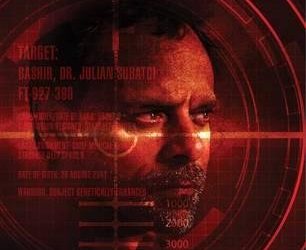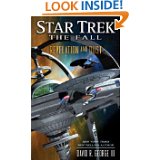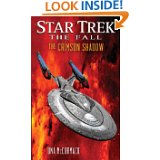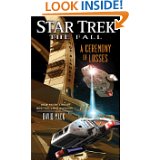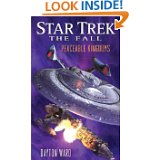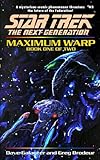About the book, Star Trek Section 31: Control

- Series: Star Trek
- Mass Market Paperback: 368 pages
- Publisher: Pocket Books/Star Trek (March 28, 2017)
- Language: English
From the New York Times bestselling author David Mack comes an original, thrilling Section 31 novel set in the Star Trek: The Next Generation universe!
No law…no conscience…no mercy. Amoral, shrouded in secrecy, and answering to no one, Section 31 is the mysterious covert operations division of Starfleet, a rogue shadow group pledged to defend the Federation at any cost. The discovery of a two-hundred-year-old secret gives Doctor Julian Bashir his best chance yet to expose and destroy the illegal spy organization. But his foes won’t go down without a fight, and his mission to protect the Federation he loves just end up triggering its destruction. Only one thing is for certain: this time, the price of victory will be paid with Bashir’s dearest blood. (via Amazon)
Buy, read, and discuss this book:
Amazon | Barnes & Noble | Goodreads
About the author, David Mack 
DAVID MACK is the award-winning and New York Times bestselling author of over three dozen novels and numerous short works of science fiction, fantasy, and adventure, including the STAR TREK DESTINY trilogy.
Beyond prose, Mack’s writing credits span several media, including television (for episodes of STAR TREK: DEEP SPACE NINE) and comic books.
Mack’s most recent novels are THE MIDNIGHT FRONT and THE IRON CODEX, the first two books of his DARK ARTS series from Tor Books.
His upcoming works include THE SHADOW COMMISSION, book three of Dark Arts, coming in 2020, and a new STAR TREK: THE NEXT GENERATION novel, COLLATERAL DAMAGE, on October 8, 2019. (via Amazon)
Connect with David:
 My Thoughts
My Thoughts
This novel is two years old, but I only read it last week, because somehow, I missed it. My timing was not the best – reading this story concurrently with the last episodes of Star Trek: Discovery’s second season, which was also about Section 31’s AI Control, though, not the same story (though some themes were naturally similar, as you might expect whenever you deal with a super-intelligent AI) had me wishing the Discovery writers were telling Mack’s story.
Alas, they were not. And Discovery, which I love, is it’s own thing.
So, what about Control. Well, this novel takes place in two time periods. One is at the dawn of the Federation, and involves a civilian scientist who has created a threat assessment logarithm that he sells to the Federation. If you’ve read any of the articles about how the back room folks at Amazon, Google, and Apple work with Alexa, and Siri and such, you can understand where some of the inspiration came from. The characters in that section of the novel, with the exception of passing mentions of Archer, are largely original creations, but they mesh well with the Star Trek universe. I felt the ‘past’ parts of the story made sense, especially given our current level of technology and the growing dependence on “smart” devices.
The “contemporary” part of the story is in the post-Nemesis timeline of current TrekLit canon, and features Julian Bashir and Sarina Douglas in their current guise as interstellar people of mystery… I mean special ops agents. I was never a particular fan of Bashir when DS9 was on, but he matured as a character as I’ve matured as a person, a viewer, and a reader, and now I really enjoy visits with him.
Data and Lal (resurrected in previous novels) also feature heavily in the contemporary part of the story, but I find myself never sure I “like” this new version of Data. Yes, this slightly jaded, slightly bitter, lonely, isolated version of him makes sense after all he’s been through – in another novel he, himself, described himself as “Data 2.0” – but there’s something hollow about him that makes him difficult for me to connect with. (I’m sure that’s just a fangirl reaction.)
Overall, I found this novel to be well-paced, balancing the two time periods really well, with the sections in the early Federation really building well to the world we are so much more familiar with as fans.
As much as I found the story interesting and compelling, I also found it a bit prescient. As I was reading it, those aforementioned articles about Alexa and Siri kept coming back to haunt me, but so did the line from Harry Potter about never trusting anything that appears to think for itself unless you can see where it keeps its brain.
Goes well with peach cobbler… and piping hot raktajino, obviously.

